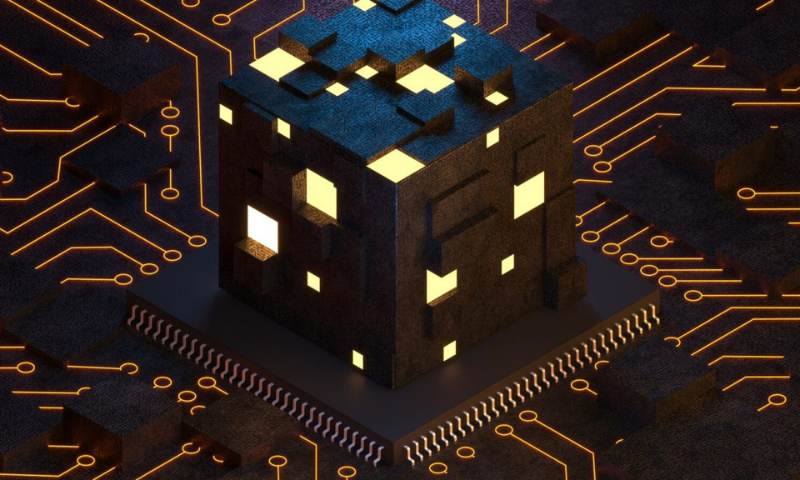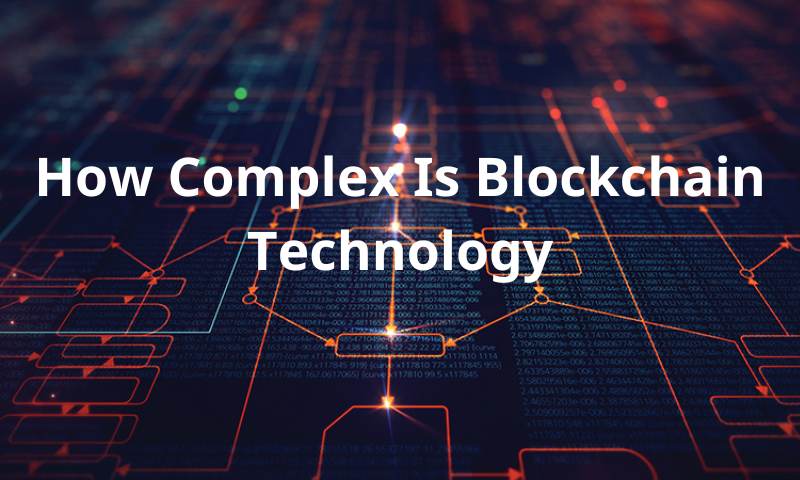Unraveling the Mysteries: How Complex Is Blockchain Technology? Folks often ask, “How complex is blockchain technology?” Let’s get real: At a glance, it might look like a beast with all its tech-talk. I’m here to guide you through the nooks and crannies that make up blockchain. Think of it as a behind-the-scenes tour where you’ll learn the magic of how it all sticks together. We’ll dive into its architecture, unravel its consensus methods, and break down smart contracts to their core. And that’s just the start. Blockchain is more than a buzzword—it’s a fortress guarding digital trust and a race car speeding us into the future. I’ve got the know-how, and I’m ready to spill the secrets. So stick around, and let’s decode this puzzle together.
Unraveling Blockchain Architecture and Consensus Mechanisms
Exploring the Heart of Blockchain: Its Architectural Design
Imagine a huge book. Each page is a list of trades. This is blockchain. It’s like a big, truth-telling book that everyone can look at, but no one can erase or change past pages. Each page, or ‘block’, is full of info on who traded what. ‘Miners’ use computer power to add more pages. They make sure trades are real. This is key in understanding blockchain.
Why is this important? Because it’s safe and fair for all. Folks trust it because it’s hard, almost impossible, to cheat or change old info. It’s all out in the open.
Understanding Consensus: Proof of Work vs. Proof of Stake
Now, let’s chat about “consensus.” This is how all the computers agree on what’s true or not. They confirm new pages and trades. There are two big ways: Proof of Work (PoW) and Proof of Stake (PoS).
Proof of Work is like a race. Computers solve puzzles. Winner adds the new page and gets a prize, like Bitcoin. But, it uses a lot of power.
Proof of Stake is newer, less power-hungry. Instead of racing, folks put up some coins. They say, “I promise to tell the truth.” If they don’t, they lose their coins. It’s like a deposit. If you play fair, you’re good. If not, you pay.
These are the gears that keep blockchain running smooth. They’re complex but super cool. They make blockchain a strong, unique tech. We need to understand these to get the whole picture. They’re rock-solid but gotta stay in line with rules. If they mess up, people could lose trust. That’s bad for everyone.
Blockchain tech is fancy and a bit tricky. But once you get it, you see why folks are so excited. It’s all about being open, honest, and keeping things fair. It makes sure we can trace every trade, clear as day. That’s huge!
From buying stuff online to sending money across the world, blockchain pops up. So next time you use digital cash, think of the cool tech behind it. And how it helps keep your trades safe and sound.
Always keep in mind, blockchain is not just smart folks’ play. It’s here to make sure things are square and secure for you and me. It’s changing how we use money, proving who we are, and much more.
In simple words, blockchain is smart and mighty. It’s a tech that we’ll see a lot more in our lives. It’s not easy stuff. But knowing about it is worth your while. It’s part of our new digital world. And it’s getting bigger each day. So stick around, we’re just getting started on this wild ride.
Demystifying Smart Contracts and Cryptocurrency Fundamentals
The Role and Execution of Smart Contracts
Smart contracts are like promises in digital form. They are made of code and run on a blockchain. People use them to trade without the need for middlemen. A smart contract locks the deal’s rules into the code itself. Once you meet these rules, the contract does the rest. It carries out what was agreed, step by step.
Think of a vending machine. You pick a snack, pay, and the machine gives it to you. A smart contract works in the same way. It checks payment and delivers the digital item automatically.
These contracts make sure everything is fair. No one can break the deal or twist the rules. They cut risks and can save time and money. Plus, they work 24/7 without stopping.
The ABCs of Cryptocurrencies and Their Underlying Mechanics
Cryptocurrencies are digital money. They rely on blockchain technology to work. Unlike regular money, they do not come from banks or governments. Instead, they travel on a vast network of computers. Together, these computers watch over the safety of the currency.
Each cryptocurrency has a record book called a ledger. Think of it as a list of every deal ever made. This ledger is not in one place. It’s copied across many computers worldwide. So it’s hard to change or attack.
There is a process called mining to make new coins. It’s like a race to solve a very hard math problem. The winner gets to add new coins to the system.
Blockchains use special ways to agree on what’s true, like Proof of Work or Proof of Stake. These help keep the system safe and make sure only real deals go through.
This all may seem complex, but it’s like learning to ride a bike. Once you get it, it’s not so tricky. The key is to take it step by step. Learn the parts piece by piece, and you’ll see how they fit together.
Crypto and smart contracts can be game-changers. They help people trade faster, safer, and in brand-new ways. They are tools helping to build a new and exciting digital world. Keep exploring and you will see how powerful they can really be.
Addressing the Security and Scalability of Blockchain
Guarding the Ledger: An Overview of Blockchain Security Features
Picture this: a vault so safe that everyone can watch it but no one can cheat. That’s what blockchain security is like. It uses math to keep data safe. Our goal is to keep our blockchain away from hackers. We do this with special code. This is called cryptographic hashing. It turns data into unique codes.
Proof of work makes users solve puzzles to add new blocks. It takes a lot of computer power and time. This prevents bad guys from messing with the blockchain. Still, it uses a lot of energy. We all know that’s not good for our earth. People are now looking at proof of stake. It picks block creators based on how many coins they have. This saves energy.
Overcoming Growth Pains: Tackling Blockchain Scalability Issues
But here’s the deal: as blockchains grow, they can get slow. This is a big deal for understanding blockchain. You know, like when too many friends come to your party and there’s not enough pizza? So, we’re trying to make blockchains that can handle a lot of data without slowing down or costing too much. We call this scalability.
To fix this, some smart folks put transactions on side roads or sidechains. This helps the main road, or main chain, not get too busy. Other times, they change the code. We call these changes forks. Another way they’re fixing this is by making blocks take less space.
People use these ways to buy stuff with cryptocurrency, like Bitcoin, without trouble. This is part of what we call decentralized finance. It’s a new way to handle money without banks.
Big companies also use blockchain now. They like it because it’s clear and you can’t change the data. For example, it helps stores keep track of their things. We call this blockchain for supply chain transparency.
But it’s not all easy. There are things to fix, like making our blockchain safe and quick. We have to follow rules, too. Blockchain compliance and regulation makes sure we play fair.
Blockchain is still growing. It will help us do lots of new things. But we must work hard to keep it safe and fast. And that’s the scoop on how we’re trying to keep blockchain strong and speedy!
Remember, blockchain isn’t simple, but it’s not too hard for you to get. It’s like a game with its own rules. And once you learn them, it all makes sense. Even the big words start to fit right into place.
The Future Shaped by Blockchain: Interoperability and Industry Influence
Bridging Blockchain Islands: The Quest for Interoperability
Picture two islands cut off from each other. That’s a lot like blockchain today. Each blockchain is an island, often alone. It works well alone but can do so much more if connected with others. Think of interoperability as bridges between these islands. It makes different blockchains talk and share with each other. “Can blockchains work together?” Yes, they can now. Projects are being made to connect blockchains. This lets them share info and value.
For instance, a user on one blockchain could send info or money to someone on another blockchain. This was hard before interoperability. Blockchains like AION, Wanchain, and Cosmos are at work making these bridges. This change is huge because it lets us use the best parts of each blockchain, no matter which one we start from.
The Ripple Effect: How Blockchain Is Influencing Various Industries
Now, let’s see how blockchain is like a stone thrown into a pond. It makes ripples that touch many things. From how we pay and trade to keeping records safe. Every industry can be changed by blockchain. “How does blockchain change things?” It creates trust in a new way. Before, we needed banks, lawyers, and other middlemen to trust a deal. Blockchain gets rid of the middlemen. It makes sure everyone follows rules without needing someone to watch over.
Take the supply chain. We can now track a product from where it’s made to our hands. All safe from being faked. This helps us trust that our food, clothes, and med are real and fair. Or look at health care. All our health info can be safe on a blockchain. Doctors everywhere can use it fast if we say it’s okay. Even voting can change. Voting on a blockchain can stop cheating. It can make sure all votes count and are what they seem.
“Blockchain and digital identity” is another big change. Blockchain can store our personal info, like our birth record or ID. We can show who we are online in a blink, safe and easy. Also, buying and owning a house or car can soon be done with blockchain. It’s all written down and cannot be changed wrong. As for the cash in our pockets, it can turn digital with crypto. “Cryptocurrency fundamentals” are simple. They cut out the banks and let us trade money fast and far.
Everywhere we look, blockchain is making waves. It’s not just for tech nerds. It’s for everyone. We’ll keep seeing its power grow. We’ll find new ways to use it that we can’t even think of today. It’s a tricky puzzle, but one by one, we are putting all the pieces in place. It’s a tech that shapes our future, and it’s thrilling to be a part of it.
We’ve covered a lot about blockchain, from its complex design to how it changes industries. First, we looked at the bones of blockchain, seeing how its design helps it work. We broke down “consensus,” comparing Proof of Work and Proof of Stake. Next, we dived into smart contracts and learned the basics of cryptocurrency. This can seem tricky, but it’s just how blockchain does deals and trades.
We also tackled the big issues: keeping blockchain secure and helping it handle more users. Then we talked about blockchain’s future, like working with other systems and changing businesses.
In closing, blockchain is a game-changer. It’s technical but keeps growing and evolving. It might be hard to get, but it’s shaping our world in big ways. Keep an eye on it; blockchain is just getting started. Thanks for sticking with me as we went deep into this tech marvel!
Q&A :
How does blockchain technology work?
Blockchain technology is a digital ledger system where transactions are recorded in blocks and linked together in chronological order, creating a chain of blocks. Each block contains a list of transactions that is validated by network participants, known as nodes, through a consensus process. Once a block is added to the chain, it is immutable, ensuring the security and integrity of the entire blockchain.
What makes blockchain a complex technology?
The complexity of blockchain technology lies in its various components and mechanisms such as cryptographic hash functions, consensus algorithms like Proof of Work or Proof of Stake, and the decentralized nature requiring synchronization across numerous nodes. Additionally, blockchain involves intricate software development, smart contract creation, and the maintenance of interoperability across different blockchain systems.
Is blockchain technology only used for cryptocurrencies?
While blockchain gained notoriety through the introduction of cryptocurrencies such as Bitcoin, it has a wide array of applications beyond digital currencies. Industries like supply chain management, healthcare, finance, and even voting systems are exploring and adopting blockchain for its ability to ensure data integrity, transparency, and secure transactions without a central authority.
What are the main challenges of implementing blockchain?
Implementing blockchain technology comes with challenges that include high energy consumption for certain consensus mechanisms, scalability issues as more transactions are added to the network, legal and regulatory hurdles, and the need for widespread adoption and understanding. These hurdles make it crucial for those implementing blockchain to carefully plan and address potential obstacles.
Can blockchain technology be hacked or compromised?
While blockchain is renowned for its security due to cryptographic techniques and decentralized validation, it is not completely immune to attacks. Vulnerabilities such as the 51% attack, where a user or group controls the majority of mining power, can compromise blockchain integrity. Smart contracts can also contain code exploits. However, such occurrences are infrequent, and security measures are continually evolving.


